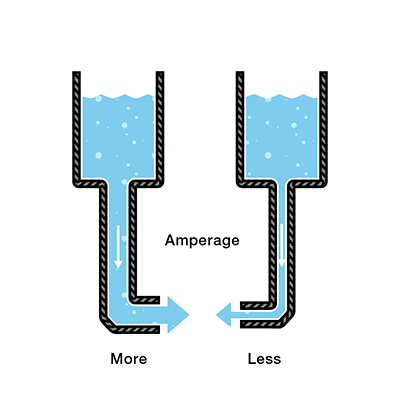Voltage, Current, Resistance, and Ohm's Law
Resistance
Consider again our two water tanks, one with a narrow pipe and one with a wide pipe.
It stands to reason that we can't fit as much volume through a narrow pipe than a wider one at the same pressure. This is resistance. The narrow pipe "resists" the flow of water through it even though the water is at the same pressure as the tank with the wider pipe.
In electrical terms, this is represented by two circuits with equal voltages and different resistances. The circuit with the higher resistance will allow less charge to flow, meaning the circuit with higher resistance has less current flowing through it.
This brings us back to Georg Ohm. Ohm defines the unit of resistance of "1 Ohm" as the resistance between two points in a conductor where the application of 1 volt will push 1 ampere, or 6.241×10^18 electrons. This value is usually represented in schematics with the greek letter "Ω", which is called omega, and pronounced "ohm".

